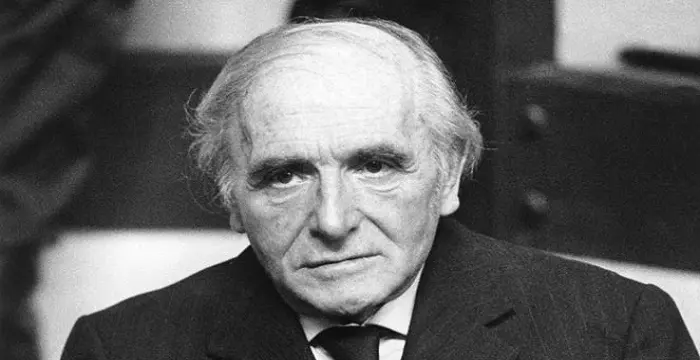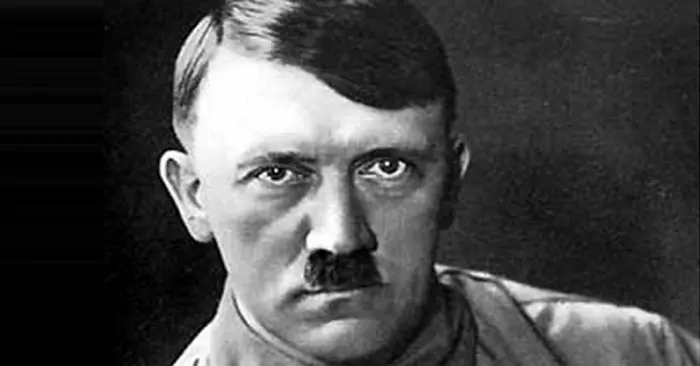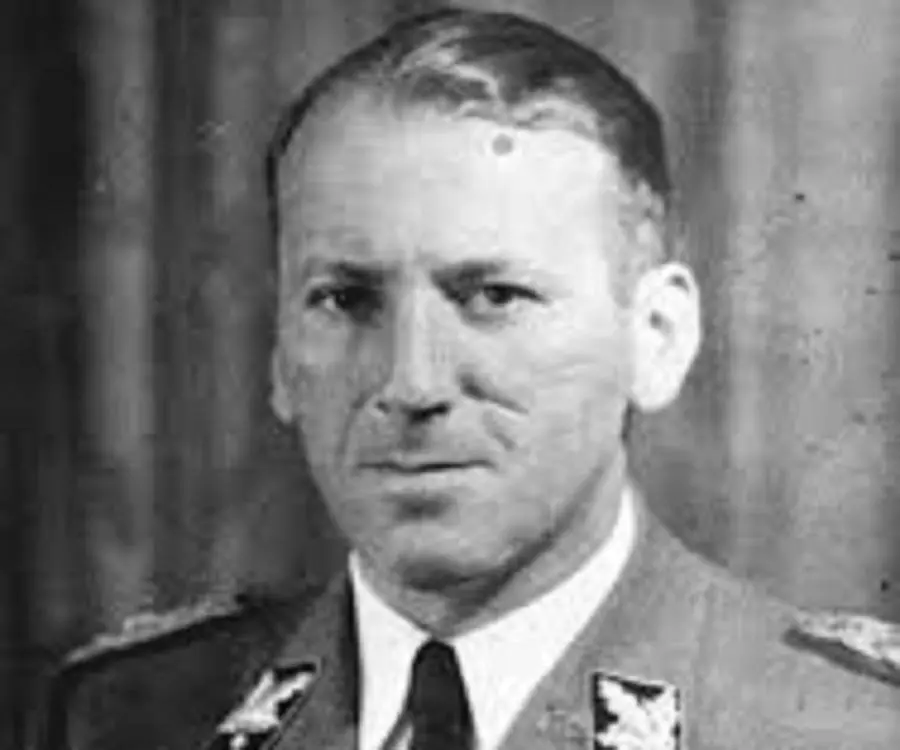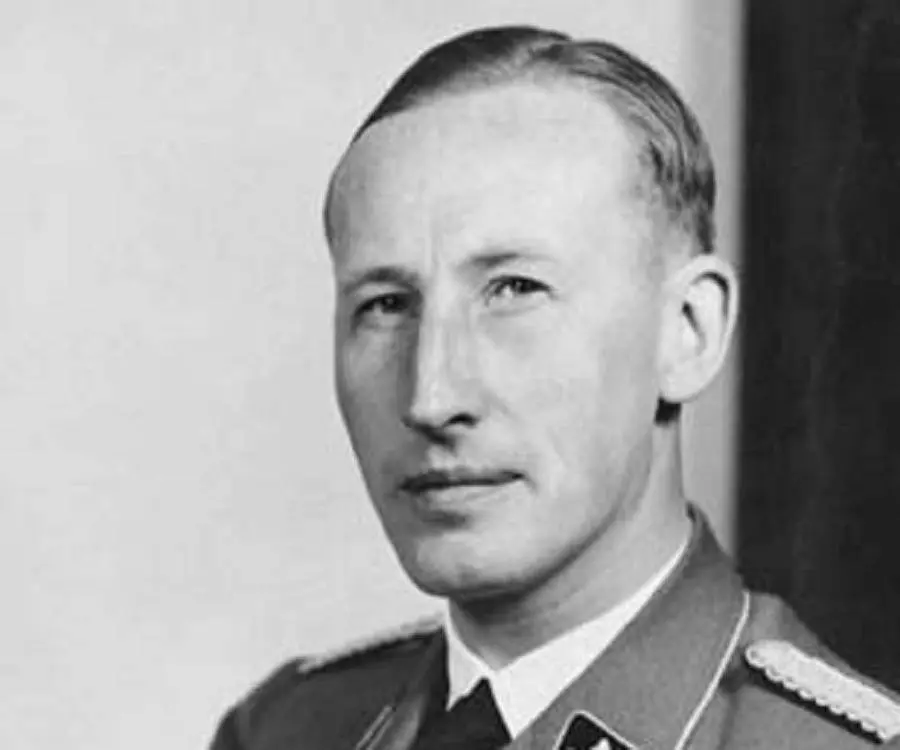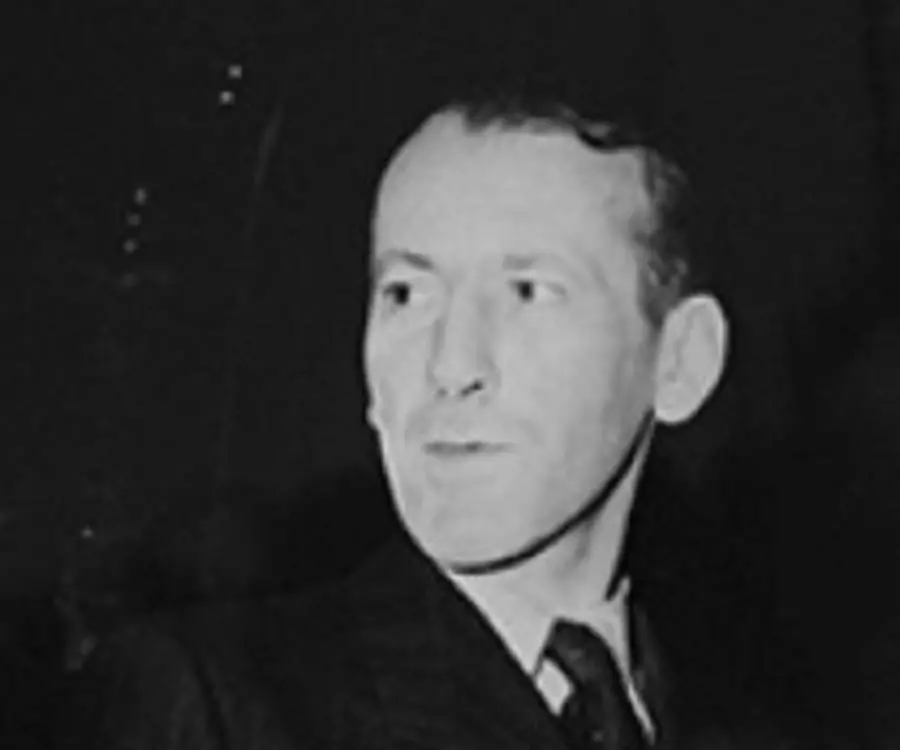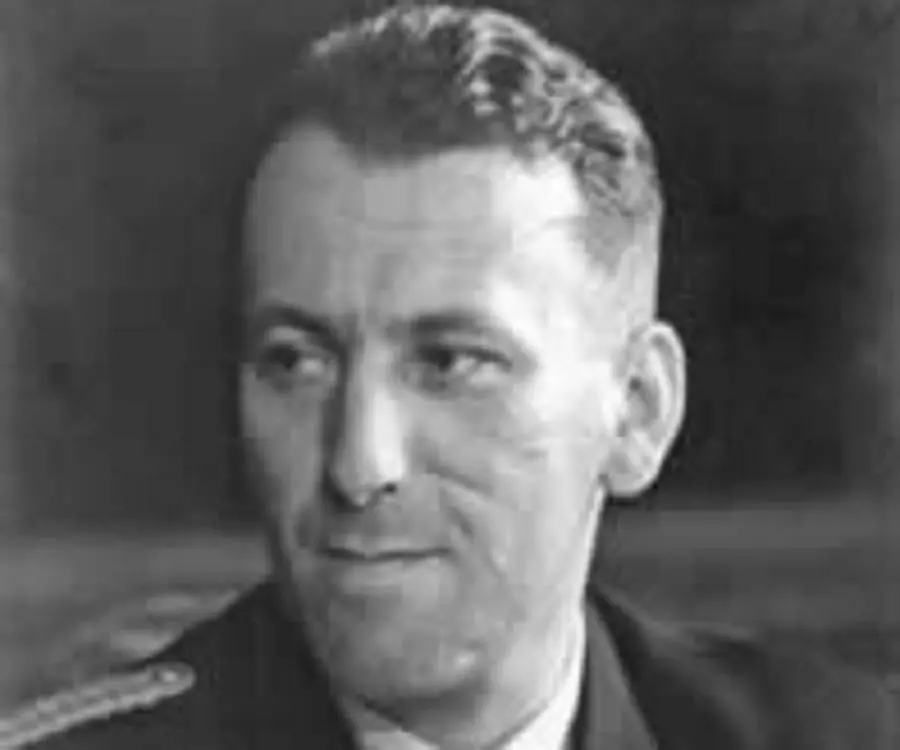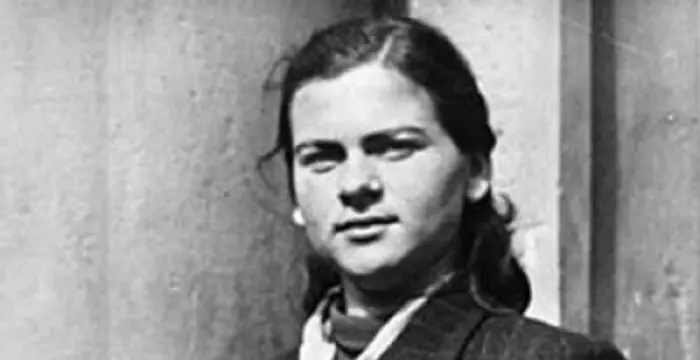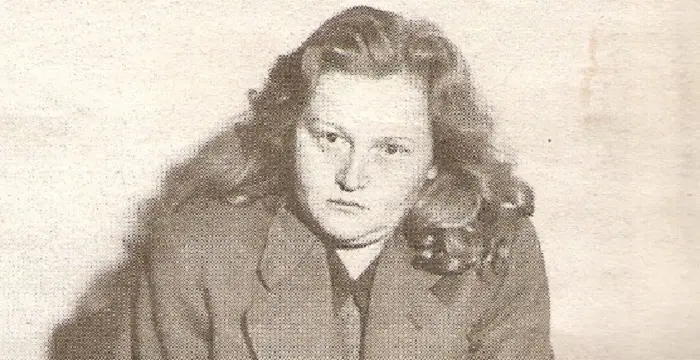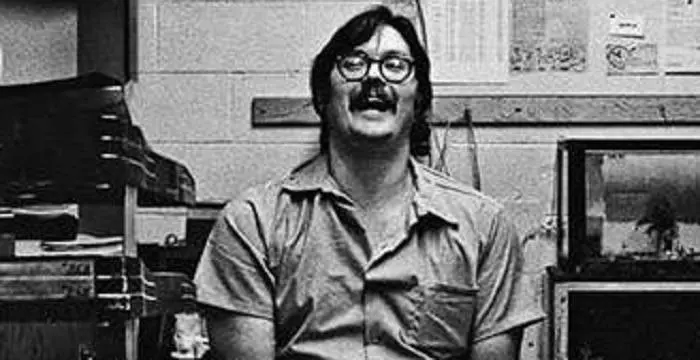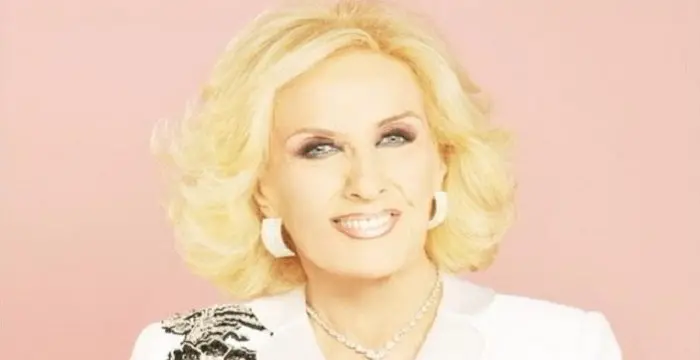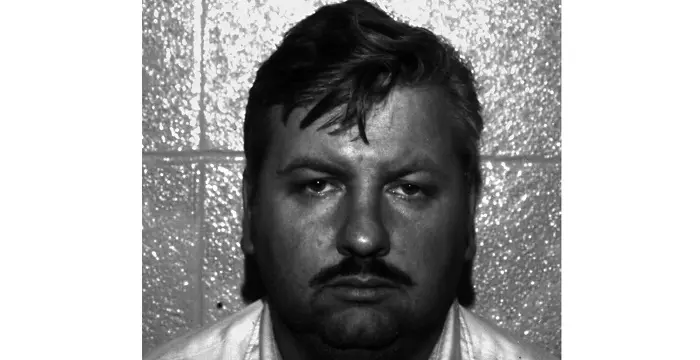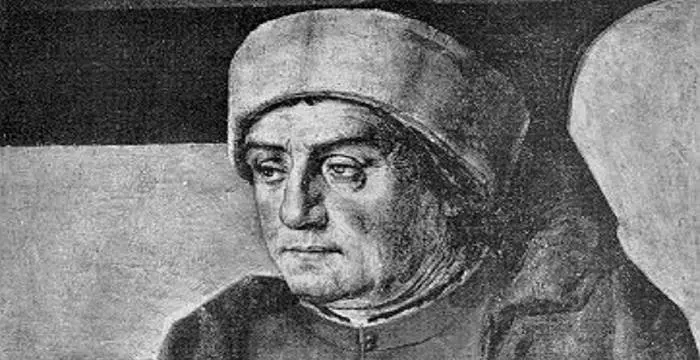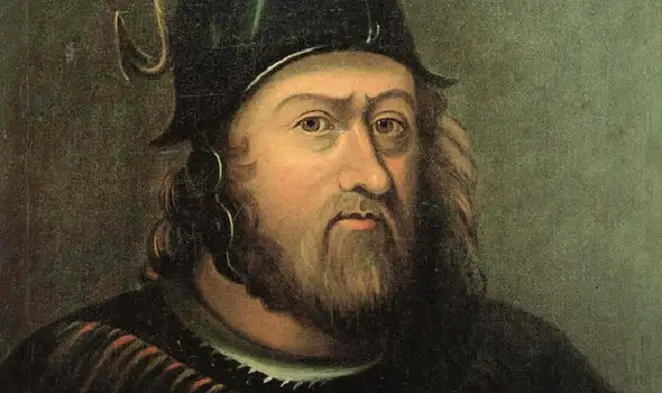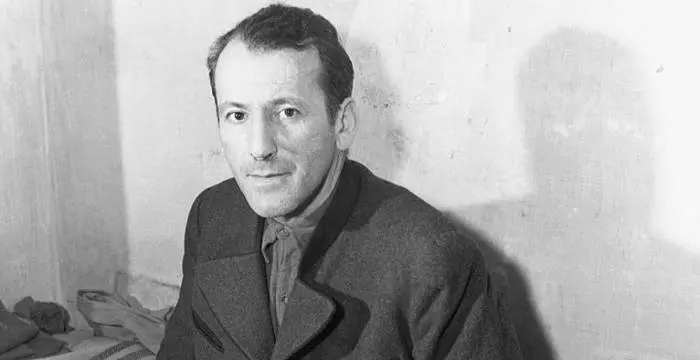
Ernst Kaltenbrunner - Nazi Leader, Life Achievements and Childhood
Ernst Kaltenbrunner's Personal Details
Ernst Kaltenbrunner was an Austrian Nazi Party leader during World War II
| Information | Detail |
|---|---|
| Birthday | October 4, 1903 |
| Died on | October 16, 1946 |
| Nationality | Austrian |
| Famous | Criminals, War Criminals, Nazi Leader |
| Partners |
|
| Spouses | Elisabeth Eder (m. 1934) |
| Childrens | Ursula Kaltenbrunner, Werner Kaltenbrunner, Wolfgang Kaltenbrunner |
| Universities |
|
| Notable Alumnis |
|
| Cause of death |
|
| Birth Place | Ried im Innkreis |
| Religion | Catholicism |
| Height | 194 |
| Gender | Male |
| Father | Hugo Kaltenbrunner |
| Mother | Therese Udwardy |
| Sun Sign | Libra |
| Born in | Ried im Innkreis |
| Famous as | Nazi Leader |
| Died at Age | 43 |
// Famous Nazi Leader
Klaus Barbie
Klaus Barbie was a Nazi leader infamous for his crimes against French prisoners during World War II. Check out this biography to know about his childhood, family life, achievements and other facts about his life.
Adolf Hitler
Adolf Hitler was the infamous dictator of Germany who carried out the genocide of Jews and was majorly responsible for the World War II. Know more about his life in this biography.
Hermann Fegelein
Hermann Fegelein was a high-ranking Waffen-SS commander in Nazi-ruled Germany. Check out this biography to know about his childhood, family life, crimes and other facts about him.
Ernst Kaltenbrunner's photo
Who is Ernst Kaltenbrunner?
Ernst Kaltenbrunner was an Austrian-born Nazi Party leader during the World War II and a fanatic Hitler loyalist, who played a leading role in setting up the concentration camps and execution of the Jews. A lawyer by profession, he became the general in the Schutzstaffel (SS), and held the office of Chief of the Reich Main Security Office. After the union of Austria and Germany, he became the official head of the Austrian storm troopers. He also held the post of minister of state security in Austria for three years. After the assassination of Reinhard Heydrich by Czechoslovak patriots, he was appointed to head Germany’s Reich Security Central Office, and was in charge of both the Gestapo and the Nazi concentration camps across Europe. A strong anti-Semite, he agreed with Heinrich Himmler, a leading member of the Nazi Party, that the gas chamber was the right method to execute the Jews. He was taken as a prisoner by the US troops in 1945, and was convicted of committing war crimes and crimes against humanity by the International Military Tribunal at Nürnberg. Kaltenbrunner was the highest-ranking member of the SS to be hanged to death.
// Famous War Criminals
Irma Grese
Irma Grese was a notorious German Nazi concentration camp guard during the Second World War. This biography profiles her childhood, life, horrifying acts, death and other facts.
Mutsuhiro Watanabe
Mutsuhiro Watanabe was an Imperial Japanese Army corporal in the Second World War. Check out this biography to know about his childhood, family life, achievements and other facts about him.
Ilse Koch
Ilse Koch was the wife of Karl-Otto Koch, the chief of the Nazi concentration camps in Buchenwald and Majdanek. This biography profiles her childhood, life, crimes, and timeline.
Childhood & Early Life
Ernst Kaltenbrunner was born on October 4, 1903, in Ried im Innkreis, Austria. His father was a lawyer and his family members were keen supporters of the Pan-German Movement.
He attended Realgymnasium in Linz and then went to Graz University from where he obtained his doctorate degree in law in 1926. He worked at a law firm in Salzburg for a year and later opened his own office in Linz in 1928.
Career
Ernst Kaltenbrunner joined the Nazi Party as an NSDAP member on October 18, 1930, and the following year, he became the district speaker (Bezirksredner) for the party in Oberösterreich. In the same year, he also joined the SS and became a legal consultant (Rechtsberater) for the party. In 1932, he served in this same post for SS Abschnitt VIII.
In the early 1930s, he also began working at his father's law firm, and in 1933 he became the head of the National-Socialist Lawyers' League in Linz.
In January 1934, he was jailed for conspiracy by the Engelbert Dollfuss government. After he led a hunger strike, he was released along with 489 party members. In 1935, he was jailed again for conspiracy, and he lost his license to practice law.
In 1935, he headed the illegal SS Abschnitt VIII in Linz, and was regularly in touch with Heinrich Himmler, Reinhard Heydrich, and Heinz Jost, getting their orders and monetary support for his Austrian comrades. The Austrian authorities arrested him in 1937 for heading the illegal Nazi Party.
He actively assisted in the annexation of Austria into Nazi Germany in March 1938. Thereafter, he held the post of the state secretary for public security in the Seyss-Inquart cabinet, and was promoted to SS-Brigadeführer in March 1938, and later to SS-Gruppenführer (lieutenant general). During this time, he also helped in establishing the concentration camp at Mauthausen near Linz. In the same year, he was appointed High SS and police leader for Donau, and he held the post till 1943.
Kaltenbrunner, a committed anti-Semite, was present at a meeting in 1940 between Hitler, Goebbels, Himmler, and Heydrich, where it was decided to gas all Jews who were incapable of heavy physical work. Under Kaltenbrunner's command, the persecution of Jews picked up pace.
Admist all his duties, he developed an intelligence network across Austria, impressing Heinrich Himmler, who assigned him as chief of the RSHA in 1943. After the assassination of Heydrich in June 1942, he replaced him as the chief of the Reich Main Security Office. He also replaced Heydrich as President of the International Criminal Police Commission, which is today known as Interpol.
Kaltenbrunner inspected the Mauthausen-Gusen concentration camp on a regular basis. He selected 15 prisoners to demonstrate three methods of killing—by shooting in the neck, hanging, and gassing. In October 1943, he ordered Herbert Kappler, the head of German security services in Rome, to deport the Jews by train to Auschwitz concentration camp for eradication. He also assisted in the process of rounding up and deporting Hungary's 750,000 Jews.
He was also responsible for heading Operation Long Jump to assassinate Stalin, Churchill, and Roosevelt. However, Soviet intelligence agent Gevork Vartanian thwarted the mission.
After the failed conspiracy to kill Hitler on July 20, 1944, Kaltenbrunner was given the responsibility to investigate the attack. After the military coup against Hitler was revealed, Kaltenbrunner arrested all people connected with the attempted coup. He executed 5,000, and sent thousands of others to concentration camps. He also ordered the killings of many members of the conspirators' families.
On November 15, 1944 he was awarded the Knights Cross of the War Merit Cross with Swords. He was also awarded the NSDAP Golden Party Badge and the Blutorden (Blood Order). In December 1944, he was granted the rank of General of the Waffen-SS.
As the Chief of RSHA, Kaltenbrunner issued a decree on February 6, 1945, that allowed policemen to shoot people at their discretion and without judicial review. By early 1945, the power of the Germans was deteriorating fast, as a result of the Allied bombing campaigns and the approach of the Red Army. The Germans launched a counter campaign, which was not successful. This served as a major blow to Himmler's standing with Hitler, enabling Kaltenbrunner to enjoy a greater degree of autonomy in Austria.
On April 18, 1945, Kaltenbrunner became the Commander-in-Chief of the remaining German forces in Southern Europe. But on realizing that the end of the Nazi regime was near, Kaltenbrunner fled to Altaussee in late April 1945.
On May 12, 1945, Kaltenbrunner tried to flee, disguised as a doctor with a false name. However, his mistress chanced to spot him, and called out his name, leading to his identification and arrest by the Allied troops. However, a first-hand account of the arrest from CIA documents states that the American soldiers were actively searching for Kaltenbrunner, and were confident that they had arrested the right man when his mistress called out his name.
After the World War II, the Allied forces held a series of military tribunals called the Nuremberg trials, under international law and the laws of war. At the Nuremberg trials, Kaltenbrunner was charged with crimes against peace, war crimes and crimes against humanity. During the initial trials, Kaltenbrunner was absent because he suffered from subarachnoid hemorrhage. After he was released from a military hospital, the tribunal denied his request for pardon.
Ernst Kaltenbrunner pleaded not guilty to the charges indicted against him. During cross-examination, he stated that all decrees and legal documents which bore his signature were "rubber-stamped" and filed by his adjutants. He also argued that his position as RSHA chief was only in title, and that it was Himmler who actually committed the atrocities.
On September 30, 1946, the International Military Tribunal found Kaltenbrunner not guilty of crimes against peace. However, he was found guilty of war crimes and crimes against humanity. On October 1, 1946, he was sentenced to death by hanging. He was hanged on October 16, 1946, in Nuremberg. His body was cremated at the Eastern Cemetery in Munich and the ashes were scattered in a tributary of the River Isar.
Personal Life
On January 14, 1934, Kaltenbrunner married Elisabeth Eder, who was a Nazi Party member. They had three children. He also had twins, Ursula and Wolfgang, with his long-time mistress Gisela Gräfin von Westarp.
In 2001, a Dutch citizen on vacation found Kaltenbrunner's personal Nazi security seal in an Alpine lake in Styria, Austria, 56 years after he had thrown it away in an effort to hide his identity. The words "Chef der Sicherheitspolizei und des SD" (Chief of the Security Police and SD) are engraved on it.
// Famous Criminals
Edmund Kemper
Edmund Kemper is a convicted serial killer from America who murdered ten people. Check out this biography to know about his childhood, life, crimes and other facts about him.
Irma Grese
Irma Grese was a notorious German Nazi concentration camp guard during the Second World War. This biography profiles her childhood, life, horrifying acts, death and other facts.
Mirtha Jung
Mirtha Jung is the ex-wife of former drug smuggler George Jung. Check out this biography to know about her childhood, family, personal life, crimes, etc.
Ernst Kaltenbrunner's awards
| Year | Name | Award |
|---|---|---|
Other | ||
| 0 | German Cross in Silver | |
Ernst Kaltenbrunner biography timelines
- // 4th Oct 1903Ernst Kaltenbrunner was born on October 4, 1903, in Ried im Innkreis, Austria. His father was a lawyer and his family members were keen supporters of the Pan-German Movement.
- // 1926 To 1928He attended Realgymnasium in Linz and then went to Graz University from where he obtained his doctorate degree in law in 1926. He worked at a law firm in Salzburg for a year and later opened his own office in Linz in 1928.
- // 1930 To 1933In the early 1930s, he also began working at his father's law firm, and in 1933 he became the head of the National-Socialist Lawyers' League in Linz.
- // 18th Oct 1930 To 1932Ernst Kaltenbrunner joined the Nazi Party as an NSDAP member on October 18, 1930, and the following year, he became the district speaker (Bezirksredner) for the party in Oberösterreich. In the same year, he also joined the SS and became a legal consultant (Rechtsberater) for the party. In 1932, he served in this same post for SS Abschnitt VIII.
- // Jan 1934 To 1935In January 1934, he was jailed for conspiracy by the Engelbert Dollfuss government. After he led a hunger strike, he was released along with 489 party members. In 1935, he was jailed again for conspiracy, and he lost his license to practice law.
- // 14th Jan 1934On January 14, 1934, Kaltenbrunner married Elisabeth Eder, who was a Nazi Party member. They had three children. He also had twins, Ursula and Wolfgang, with his long-time mistress Gisela Gräfin von Westarp.
- // 1935 To 1937In 1935, he headed the illegal SS Abschnitt VIII in Linz, and was regularly in touch with Heinrich Himmler, Reinhard Heydrich, and Heinz Jost, getting their orders and monetary support for his Austrian comrades. The Austrian authorities arrested him in 1937 for heading the illegal Nazi Party.
- // 1940Kaltenbrunner, a committed anti-Semite, was present at a meeting in 1940 between Hitler, Goebbels, Himmler, and Heydrich, where it was decided to gas all Jews who were incapable of heavy physical work. Under Kaltenbrunner's command, the persecution of Jews picked up pace.
- // Jun 1942 To 1943Admist all his duties, he developed an intelligence network across Austria, impressing Heinrich Himmler, who assigned him as chief of the RSHA in 1943. After the assassination of Heydrich in June 1942, he replaced him as the chief of the Reich Main Security Office. He also replaced Heydrich as President of the International Criminal Police Commission, which is today known as Interpol.
- // Oct 1943Kaltenbrunner inspected the Mauthausen-Gusen concentration camp on a regular basis. He selected 15 prisoners to demonstrate three methods of killing—by shooting in the neck, hanging, and gassing. In October 1943, he ordered Herbert Kappler, the head of German security services in Rome, to deport the Jews by train to Auschwitz concentration camp for eradication. He also assisted in the process of rounding up and deporting Hungary's 750,000 Jews.
- // 20th Jul 1944After the failed conspiracy to kill Hitler on July 20, 1944, Kaltenbrunner was given the responsibility to investigate the attack. After the military coup against Hitler was revealed, Kaltenbrunner arrested all people connected with the attempted coup. He executed 5,000, and sent thousands of others to concentration camps. He also ordered the killings of many members of the conspirators' families.
- // 15th Dec 1944On November 15, 1944 he was awarded the Knights Cross of the War Merit Cross with Swords. He was also awarded the NSDAP Golden Party Badge and the Blutorden (Blood Order). In December 1944, he was granted the rank of General of the Waffen-SS.
- // 6th Feb 1945As the Chief of RSHA, Kaltenbrunner issued a decree on February 6, 1945, that allowed policemen to shoot people at their discretion and without judicial review. By early 1945, the power of the Germans was deteriorating fast, as a result of the Allied bombing campaigns and the approach of the Red Army. The Germans launched a counter campaign, which was not successful. This served as a major blow to Himmler's standing with Hitler, enabling Kaltenbrunner to enjoy a greater degree of autonomy in Austria.
- // 18th Apr 1945On April 18, 1945, Kaltenbrunner became the Commander-in-Chief of the remaining German forces in Southern Europe. But on realizing that the end of the Nazi regime was near, Kaltenbrunner fled to Altaussee in late April 1945.
- // 12th May 1945On May 12, 1945, Kaltenbrunner tried to flee, disguised as a doctor with a false name. However, his mistress chanced to spot him, and called out his name, leading to his identification and arrest by the Allied troops. However, a first-hand account of the arrest from CIA documents states that the American soldiers were actively searching for Kaltenbrunner, and were confident that they had arrested the right man when his mistress called out his name.
- // 2001In 2001, a Dutch citizen on vacation found Kaltenbrunner's personal Nazi security seal in an Alpine lake in Styria, Austria, 56 years after he had thrown it away in an effort to hide his identity. The words "Chef der Sicherheitspolizei und des SD" (Chief of the Security Police and SD) are engraved on it.
// Famous Execution peoples
Irma Grese
Irma Grese was a notorious German Nazi concentration camp guard during the Second World War. This biography profiles her childhood, life, horrifying acts, death and other facts.
Aileen Wuornos
Aileen Wuornos was a serial killer who was sentenced to death for killing seven men in Florida. This biography of Aileen Wuornos provides detailed information about her childhood, life, crimes & timeline.
John Wayne Gacy
John Wayne Gacy was an American serial killer and rapist who targeted boys and young men. This biography of John Wayne Gacy provides detailed information about his childhood, life, achievements, works & timeline.
Anatoly Slivko
Anatoly Slivko was a Soviet serial killer. Check out this biography to know about his childhood, life, crimes and other facts about him.
Anicius Manlius Severinus Boethius
Boethius was an early 6th century Roman senator and philosopher best known for his treatise ‘Consolation of Philosophy’. This biography of Boethius provides detailed information about his childhood, life, achievements, works & timeline.
William Wallace
William Wallace was a Scottish knight who was a central figure in the Wars of Scottish Independence. This biography of William Wallace provides detailed information about his childhood, life, achievements, works & timeline.
Ernst Kaltenbrunner's FAQ
What is Ernst Kaltenbrunner birthday?
Ernst Kaltenbrunner was born at 1903-10-04
When was Ernst Kaltenbrunner died?
Ernst Kaltenbrunner was died at 1946-10-16
Where was Ernst Kaltenbrunner died?
Ernst Kaltenbrunner was died in Nuremberg, Germany
Which age was Ernst Kaltenbrunner died?
Ernst Kaltenbrunner was died at age 43
Where is Ernst Kaltenbrunner's birth place?
Ernst Kaltenbrunner was born in Ried im Innkreis
What is Ernst Kaltenbrunner nationalities?
Ernst Kaltenbrunner's nationalities is Austrian
Who is Ernst Kaltenbrunner spouses?
Ernst Kaltenbrunner's spouses is Elisabeth Eder (m. 1934)
Who is Ernst Kaltenbrunner childrens?
Ernst Kaltenbrunner's childrens is Ursula Kaltenbrunner, Werner Kaltenbrunner, Wolfgang Kaltenbrunner
What was Ernst Kaltenbrunner universities?
Ernst Kaltenbrunner studied at University Of Graz, University of Graz
What was Ernst Kaltenbrunner notable alumnis?
Ernst Kaltenbrunner's notable alumnis is University Of Graz, University Of Graz
What is Ernst Kaltenbrunner's cause of dead?
Ernst Kaltenbrunner dead because of Execution
What is Ernst Kaltenbrunner's religion?
Ernst Kaltenbrunner's religion is Catholicism
How tall is Ernst Kaltenbrunner?
Ernst Kaltenbrunner's height is 194
Who is Ernst Kaltenbrunner's father?
Ernst Kaltenbrunner's father is Hugo Kaltenbrunner
Who is Ernst Kaltenbrunner's mother?
Ernst Kaltenbrunner's mother is Therese Udwardy
What is Ernst Kaltenbrunner's sun sign?
Ernst Kaltenbrunner is Libra
How famous is Ernst Kaltenbrunner?
Ernst Kaltenbrunner is famouse as Nazi Leader
